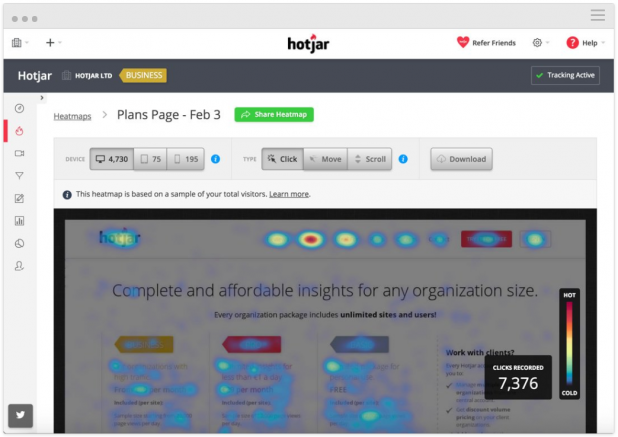In recent years, buyers’ behavior has changed dramatically. Imagine, a quarter of the entire world population in 2020 are digital buyers. If you don’t know what that means, an easy explanation is that 2.05 billion people use eCommerce platforms to purchase different products, with a total retail sales of $4.13 trillion in the industry. Aren’t these stats impressive?
No wonder eCommerce platforms are springing up as fast as mushrooms after an autumn rain. More precisely, their total number around the globe is estimated to be somewhere between 12 and 24 million websites.
Being one of these 24 million must feel intense! Keeping up is hard enough, to say nothing about being the best in the industry. The competition for every lead is brutal, and you need to fight for every sale. .
Thus, to best occupy your niche in the market, you have to keep track of all the numbers: CTRs, CAC, ROI, bounce rates, and, of course, ACR. As for the last one, let me explain what this mysterious abbreviation stands for.
What is an Average Conversion Rate for eCommerce?
Conversion Rate is the ratio of those website visitors who became your customers to the total number of visitors you had. Speaking Math language here, the formula looks like this:
Conversion Rate = Visitors who became your customers / Total website visitors number * 100%
ACR is the average conversion rate throughout the whole industry. As a rule, companies compare their numbers to the ACR of a country they operate in, instead of the global one, since they differ considerably.
Usually, if your CR is somewhere between 2% to 3%, you are doing amazing. The recent drop in the table in the first quarter of 2020 might be caused by the lockdown. But who knows, maybe COVID-19 will establish the new norm for eCommerce Conversion Rate. However, this is just a hypothesis, which needs further investigation.
If your website’s conversion rate is far away from 2.5% (or even 1.91%), there is a chance you are doing something wrong. But don’t panic, there are some awesome ways to boost your CR here and now.
1. Do website analysis
Let’s start from the beginning. Unfortunately, in the eCommerce business, it’s not enough to simply have a good product and a pretty design. To increase the effectiveness of your website, you need to track ALL your numbers and analyse them.
Improving conversion rate is a complex work, which includes optimizing all the main metrics: the bounce rate, traffic, cart abandonment rate, session time etc. To do so, you need the right tools.
Google Analytics is a nice place to start. Here, you can track the basic metrics. But if you want to learn more, I suggest you have a look at Hotjar or Mouseflow.
These tools visualise the behaviour of your visitors, creating heatmaps of your web page and even record users’ sessions. Both tools are quite easy to use and interpret.

When you’re looking at how visitors interact with your website, which buttons they click or scroll past, it becomes really easy to spot and fix your site’s Achilles Heel.
2. Research your buyers’ user behavior and user flow
Now, when you’re sure your website functions perfectly, it’s time to talk about your prospects. You have to research their behavior under the microscope to have a clear understanding of your audience. To do so, you need to create two roadmaps: user behavior and user flow.
As for the first one, it’s about who your visitors are, where they are coming from, which websites they came from, and if they leave, where they go.
User flow is more about finding out how your potential buyers behave on the website: what they are interested in, what they are looking for, which buttons they click the most. If your prospect slips through the cracks, you’ll know exactly when they clicked away.
Both roadmaps can be created with the help of the tools mentioned above. If you’re having trouble using them, you can always purchase the services of freelance developers, who can guide you every step of the way.
3. Upgrade your product page
Now, think honestly what you care the most about when buying online. Choosing the right product? Finding the best offer? Or security of your payment? Or maybe just the convenience of the website?
I bet you want it all to be perfect. Make sure that on the product page, your buyers don’t ask themselves any of these questions. And if you notice they do, your job is to work on improving it.
Again, would you stay on a website which doesn’t support a convenient payment method for you? Or which doesn’t have a relevant product description? Or maybe you’ll simply go to the one that does? I bet the answer is obvious.
4. Improve the related products section
Personally, organisation has never been my strong suit. For example, if I decide to make a cake, I’ll go to the shop, and buy the eggs, flour and baking powder. But when I get home, I realise I forgot to grab milk.
It would be such a lifesafer if the shop-basket would suggest items which would complement my purchase: some sugar, vanilla, a few strawberries and maybe even soft cheese for the cream.
I would love to see some alternatives as well: maybe, they’ll offer me a freshly made cake so I don’t even have to worry about dealing with cooking (hot ovens are always a challenge for me).
In eCommerce it works pretty much the same. Just remember that related products should be RELATED, not randomly picked. There’s not much sense in this section, if you don’t pay enough attention to how it functions.
5. Conduct A/B testing for the product page
There is always room for improvement. Even if you’re the first eCommerce website in the industry, there is no time to relax. Competitors are always ready to bump you down in the hierarchy.
A/B testing is a perfect way to constantly get better. Basically, it’s a type of marketing research, when one group of visitors can see one version of the web page, and the second group gets another version. After a while, these groups are compared and the version of the website which performed better is kept.
This way you can test what your audience likes more: videos or images of the product, short descriptions or full ones, centered texts or left-corner ones.
6. Allow customers to review the products
Spiegel Research Center claims that showing reviews on the product page increases conversion rates by 270%. 7 out of 10 visitors won’t even take any actions before they read the reviews.
So, if you still think it doesn’t make much sense to add this section, you couldn’t be more wrong. Encourage your customers to leave their impressions after purchasing the products, display most helpful reviews on strategically important places, ask for reviews on different social channels and your CR will pick up.
7. Optimize the prices
This tip will be extremely helpful if your main source of leads are price aggregator websites like Google Shopping, PriceGrabber, Shopping.com etc. Obviously, to win against the competitors in this field, you need to make the best offer to your customers without losing profit.
A good tool to try is Competera. With the help of AI and data science, they’ll automate your price optimization processes.
8. Become Mobile friendly
In the next year, the share of mobile eCommerce sales is expected to be 54%. Thus, having a mobile alternative to your website is essential. If you still don’t (or it needs improvement), it is always a good idea to hire a mobile app developer so you don’t miss out on fully half of all purchases.
9. Reduce cart abandonment rate
17% of digital buyers in the United States abandoned their carts because they were just doing the research before buying the products later.
Imagine, almost 1/5 of your abandoned carts could potentially become sales if you manage to make buyers come back to your website.
One of the easiest ways to expedite sales on return is to save abandoned carts in the system, so next time the customer comes, he or she doesn’t have to search for the same products to purchase all over again.
10. Simplify the checkout page
The most painful data point for any eCommerce business is when the buyer bails on the checkout page. They were so close!
Imagine, you spent so much time and effort getting them to the 1 yard line, but for whatever reason, you couldn’t get them over it.
Most of these issues can be easily solved. For example, simply allowing users to enter through social media accounts or continue as guests would save 37% of potential clients. Using autofill to reduce the time spent filling out the checkout forms and displaying a progress bar to show them how close they are to completing the purchase could save a further 28%.
Conclusion
ECommerce isn’t an easy business to manage. Increasing your conversion rate requires lots of effort, attention to details and constant improvement.
I hope the tips stated above and all others you can search for might give you some hints as to which direction to go and how to locate your conversion-killer. But the main thing is to understand your buyers, analyse your numbers and never neglect assistance from outside. Remember that knowledge is power and that investing a little time and money into improving your website and understanding your client-base today will definitely bring big rewards in the future.





